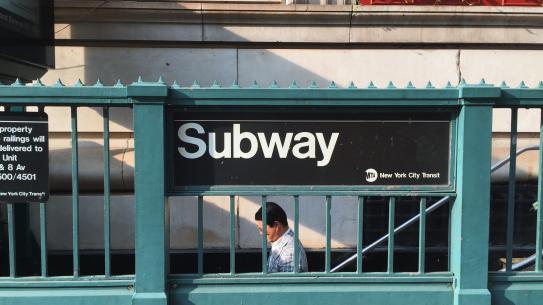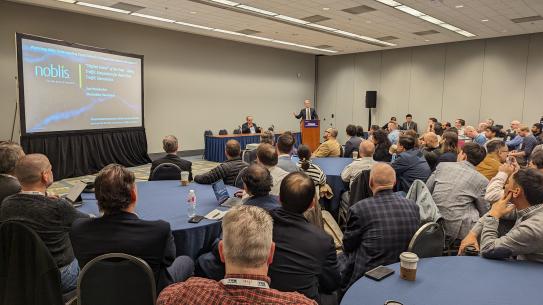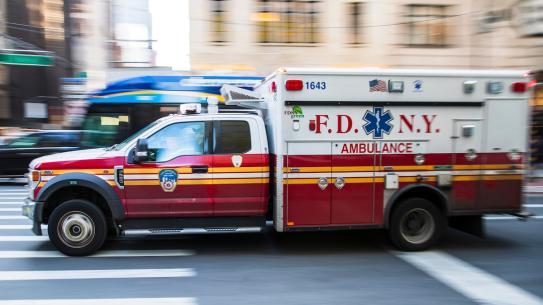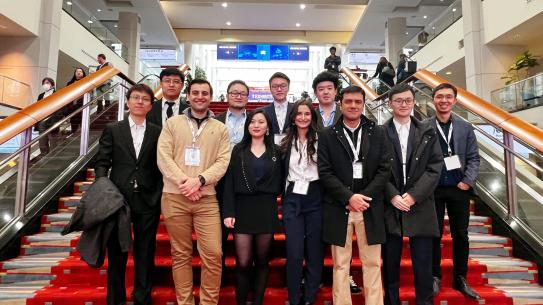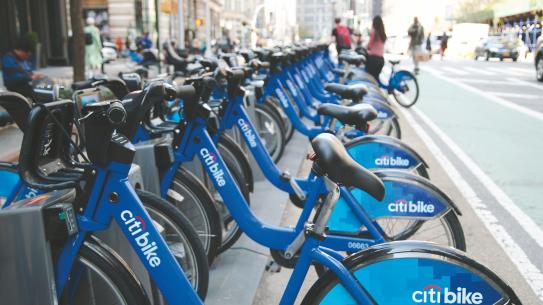Joseph Chow
,
PhD, PE
-
Institute Associate Professor
-
Deputy Director of C2SMART University Transportation Center
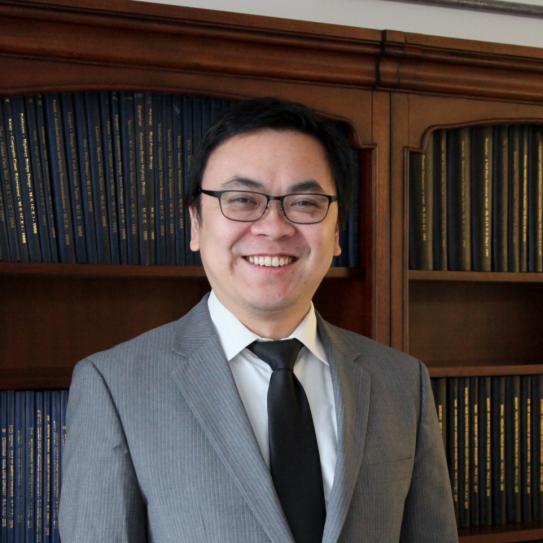
Dr. Joseph Chow is an Institute Associate Professor in the Department of Civil & Urban Engineering and the Deputy Director at the C2SMART Tier-1 University Transportation Center at NYU, and heads BUILT@NYU: the Behavioral Urban Informatics, Logistics, and Transport Laboratory. His research expertise lies in transportation systems, with emphasis on multimodal networks, behavioral urban logistics, smart cities, and transport economics. He is an NSF CAREER award recipient; he is a former elected Chair of the Urban Transportation SIG and appointed TSL Cluster Chair at INFORMS Transportation Science & Logistics Society, chair of the TRB subcommittee on Route Choice and Spatiotemporal Behavior, and is an appointed Associate Editor for International Journal of Transportation Science & Technology and Transportation Research Record, the journal for the Transportation Research Board of the National Academies. At NYU he is an Associated Faculty at CUSP and Rudin Center. Prior to NYU, Dr. Chow was the Canada Research Chair in Transportation Systems Engineering at Ryerson University. From 2010 to 2012, he was a Lecturer at University of Southern California and a Postdoctoral Scholar at UC Irvine. He obtained a Ph.D. in Transportation Engineering from UC Irvine (‘10), and an M.Eng. (‘01) and B.S. (‘00) in Civil Engineering from Cornell University with a minor in Applied Math. Dr. Chow is a former Eisenhower and Eno Fellow and a licensed PE in NY.
Education
Cornell University
Bachelor of Science, Civil Engineering, 2000
Cornell University
Master of Engineering, Civil Engineering, 2001
University of California, Irvine
Doctor of Philosophy, Civil Engineering, 2010
Experience
University of Southern California
Lecturer/Instructor
Epstein Department of Industrial and Systems Engineering Sol Price School of Public Policy
From: May 2010 to May 2012
University of California, Irvine
Postdoctoral Scholar
Institute of Transportation Studies
From: April 2010 to May 2012
Ryerson University
Canada Research Chair and Assistant Professor
Department of Civil Engineering
From: June 2012 to August 2015
New York University
Assistant Professor
Department of Civil & Urban Engineering
From: September 2015 to present
Publications
Journal Articles
ORCID: 0000-0002-6471-3419
Select articles:
1) Sayarshad, H.R., Chow, J.Y.J., 2017. Non-myopic relocation of idle mobility-on-demand vehicles as a dynamic location-allocation-queueing problem. Transportation Research Part E 106, 60-77.
2) Ma, Z., Urbanek, M., Pardo, M.A., Chow, J.Y.J., Lai, X., 2017. Spatial welfare effects of shared taxi operating policies for first mile airport access, International Journal of Transportation Science and Technology, in press, doi: 10.1016/j.ijtst.2017.07.001.
3) Djavadian, S., Chow, J.Y.J., 2017. An agent-based day-to-day adjustment process for modeling ‘Mobility as a Service’ for a two-sided flexible transport market, Transportation Research Part B, 104, 36-57.
4) Guo, Q.W., Chow, J.Y.J., Schonfeld, P., 2017. Stochastic dynamic switching in fixed and flexible transit services as market entry-exit real options. Transportation Research Part C, Special issue on ISTTT 22, accepted for publication.
5) Mendes, L.M., Bennàssar, M.R., Chow, J.Y.J., 2017. Simulation experiment to compare light rail streetcar against shared autonomous vehicle fleet for Brooklyn Queens Connector. Transportation Research Record, in press, doi: 10.3141/2650-17.
Other Publications
Book Chapters:
1) Chow, J.Y.J., Jayakrishnan, R., Mahmassani, H.S., 2013. Is transport modeling education too multidisciplinary? A manifesto on the search for its evolving identity. Travel Behaviour Research: Current Foundations, Future Prospect, eds. E.J. Miller and M.J. Roorda, Lulu Publishing.
Grants
CAREER: Urban Transport Network Design with Privacy-Aware Agent Learning, (Principal Investigator)
National Science Foundation, 2017 - 2022
Stable Matching of Service Tours to Design Cooperative Policies for Transport Infrastructure Systems, (Principal Investigator)
NSF, 2016 - 2019
Design of Smarter Urban Logistics Systems, (Principal Investigator)
Canada Research Chairs Program, 2013 - 2016
Multimodal Systems Design with Network Interactions, (Principal Investigator)
NSERC, 2013 - 2016
Development of mobile device-based surrogate systems for connected and autonomous vehicle technologies, (Principal Investigator)
NSERC, OCE, 2015
Agent-based decision support system for a flexible transit service pilot, (Principal Investigator)
NSERC, 2015
Affiliations
- Associated Faculty, NYU Center for Urban Science & Progress
- Vice Chair, INFORMS TSL Society, Urban Transportation SIG
- Member, Editorial Advisory Board for Transportation Research Part B from Elsevier
- Co-Chair, TRB Subcommittee on Freight Modeling
- Member, TRB Committee on Transportation Network Modeling
- Member, World Conference on Transport Research, Freight Transport Modelling SIG
Information for Mentees
About Me: Local NYer, studied in California, taught briefly in Toronto, up for coffee/tea chats
Research News
A large-scale analytical residential parcel delivery model evaluating greenhouse gas emissions, COVID-19 impact, and cargo bikes
The e-commerce industry, which has seen remarkable growth over the past decade, experienced an even more accelerated surge in the wake of the COVID-19 pandemic. This exponential rise in online shopping has triggered a corresponding boom in the parcel delivery sector. However, a glaring gap exists in our understanding of the extensive social and environmental repercussions of this burgeoning industry.
To bridge this knowledge void, researchers at NYU Tandon led by Joseph Chow, Institute Associate Professor of Civil and Urban Engineering and Deputy Director of the C2SMARTER University Transportation Center, have proposed a comprehensive model to scrutinize the multifaceted impacts stemming from the parcel delivery surge. The model's architecture incorporates a parcel generation process, ingeniously converting publicly available data into precise figures detailing parcel volumes and delivery destinations. Additionally, a sophisticated continuous approximation model has been meticulously calibrated to gauge the lengths of parcel service routes.
The veracity of this model was subjected to rigorous examination through a real-world case study, employing a trove of data from the labyrinthine streets of New York City. Impressively, the parcel generation process demonstrated an impressive degree of fidelity to the actual data. Even more striking were the high R2 values, consistently hovering at 98% or greater, characterizing the model's ability to approximate reality. Validation of the model's output was further solidified by comparing it against the tangible UPS truck journeys.
Applying this model to the year 2021, it emerged that residential parcel deliveries in NYC constituted 0.05% of the total daily vehicle-kilometers traveled (VKT), equivalent to a staggering 14.4 metric tons of carbon emissions per day. The COVID-19 pandemic substantially contributed to a surge in parcel deliveries, culminating in an alarming annual greenhouse gas (GHG) emissions figure of 1064.3 metric tons of carbon equivalent (MTCE) within the city's boundaries. To put this in perspective, this is sufficient to power the homes of 532 standard US households for an entire year.
A ray of hope emerges in the form of NYC's existing bike lane infrastructure, which has the capacity to seamlessly replace 17% of parcel deliveries with eco-friendly cargo bikes, thereby precipitating an 11% reduction in VKT. By strategically augmenting this infrastructure with 3 kilometers of bike lanes connecting Amazon facilities, the cargo bike substitution benefit skyrockets from 5% to an impressive 30% reduction in VKT. The prospect becomes even more promising with the construction of an additional 28 kilometers of bike lanes citywide, potentially pushing parcel delivery substitution via cargo bikes from 17% to a remarkable 34%, concurrently saving an extra 2.3 MTCE per day.
Notably, the prioritization of cargo bike deployments holds the potential to disproportionately benefit lower-income neighborhoods, including but not limited to Harlem, Sunset Park, and Bushwick, by substantially curtailing GHG emissions in these communities.
Hai Yang, Hector Landes, Joseph Y.J. Chow, "A large-scale analytical residential parcel delivery model evaluating greenhouse gas emissions, COVID-19 impact, and cargo bikes," International Journal of Transportation Science and Technology, 2023, ISSN 2046-0430.
New mathematical model optimizes modular vehicle fleet routes
Researchers at NYU Tandon School of Engineering’s C2SMART Center have developed an algorithm to plan the most efficient routes for modular vehicle (MV) fleets — specially-designed vehicles that attach and detach from one another as they move people around cities — removing a significant obstacle to making this type of transportation system a reality.
In a paper published in Transportation Research Part C: Emerging Technologies, the researchers employ a mathematical model called MILP (Mixed Integer Linear Programming) to optimize the service time for the passengers and the travel cost for the vehicles in an MV system. The model factors in passenger pickups and deliveries, en-route transfers, and variable capacity of the MVs to identify the best routes and schedules for the attachments and separations of the vehicles.
Conventional mass transit and demand-responsive transportation systems can face challenges accommodating fluctuations in traveler demand, leading to long travel times, energy inefficiencies, traffic congestion and financial waste.
Low-capacity vehicles like vans may be slow and overcrowded in peak times. High-capacity vehicles like buses may be largely unoccupied when demand is low. On-demand services like paratransit often deliver only one passenger at a time, making them expensive to operate.
MVs offer a flexible and efficient alternative. The independent vehicles in MV fleets can connect while in motion, creating platoons that travel as one unit until the vehicles detach. According to research lead Joseph Chow, Institute Associate Professor in the Department of Civil & Urban Engineering and the Deputy Director of C2SMART, MVs can move people faster, with less energy consumption and operational expenses than many conventional systems.
“MVs offer a promising alternative to move people more efficiently in certain situations,” said Chow, who collaborated on the research with NYU Tandon Ph.D. student Zhexi Fu. “Imagine, for instance, employees at the same company. The individual vehicles could pick up people who live within similar enclaves, and join together in a platoon to deliver the entire group to its workplace. MVs also have significant potential to improve on-demand transportation that delivers people door-to-door, including those that serve people with disabilities.”
Currently, no city has an MV system in use, although Next Transportation Systems is piloting a MV test in Dubai now. According to Chow, the inability to track and route MV fleets has been a significant roadblock to potential real-world adoption. To build its routing model, the C2SMART team used the Anaheim network, a traffic simulation of Anaheim, California.
The research on MV routing is the latest in a long series of studies Chow has conducted around urban mobility. Among his previous studies include examinations of Dial-a-Ride programs, e-scooter usage, and urban bus networks. Chow’s new research also advances the mission of C2SMART, a U.S. Department of Transportation (US DOT) Tier 1 University Transportation Center (UTC) designated to address the US DOT priority area of Congestion Reduction.
A chance-constrained dial-a-ride problem with utility-maximising demand and multiple pricing structures
The classic Dial-A-Ride Problem (DARP) aims at designing the minimum-cost routing that accommodates a set of user requests under constraints at an operations planning level, where users’ preferences and revenue management are often overlooked.
Researchers at NYU Tandon, including Joseph Chow, professor of civil and urban engineering and Deputy Director of the C2SMART Tier 1 University Transportation Center, have designed innovative solutions. In a paper in Elsevier’s Transportation Research, they present a mechanism for accepting and rejecting user requests in a Demand Responsive Transportation (DRT) context based on the representative utilities of alternative transportation modes. They consider utility-maximising users and propose a mixed-integer programming formulation for a Chance Constrained DARP (CC-DARP), that captures users’ preferences.
They further introduce class-based user groups and consider various pricing structures for DRT services, and develop a local search-based heuristic and a matheuristic to solve the proposed CC-DARP. The study includes numerical results for both DARP benchmarking instances and a realistic case study based on New York City yellow taxi trip data. They found, with computational experiments performed on 105 benchmarking instances with up to 96 nodes yielded average profit gaps of 2.59% and 0.17% using the proposed local search heuristic and matheuristic, respectively.
The based on the case study the work suggests that a zonal fare structure is the best strategy in terms of optimizing revenue and ridership. Their CC-DARP formulation provides a new decision-support tool to inform revenue and fleet management for DRT systems on a strategic planning level.
Co-authors of the study are Xiaotong Dong and Travis Waller of the School of Civil and Environmental Engineering, University of New South Wales, Australia; and David Rey of the SKEMA Business School, Université Côte d’Azur, France.
Transit Network Frequency Setting With Multi-Agent Simulation to Capture Activity-Based Mode Substitution
Despite the emergence of many new mobility options in cities around the world, fixed route transit is still the most efficient means of mass transport. Bus operations are subject to vicious and virtuous cycles. Evidence of this can be seen in New York City.
Since 2007, travel speed reductions and increased congestion as a result of more mobility options competing for road space have led to a vicious cycle of ridership reduction and further increased congestion as former transit passengers take to other less congestion-efficient modes. In Brooklyn, bus ridership has declined by 21% during this period. While the decrease in ridership has been steady throughout this period, there is an emerging concern that it will only get worse as for-hire vehicle services like Uber and Lyft add more trips to the road network
Intervention in the form of network redesign is required to promote a virtuous cycle and make the bus more competitive, especially in the face of increased competition from ride-hail services. This can be done by redesigning the bus network in a way that reduces operating and user costs while increasing accessibility for more riders.
Now, new research from Joseph Chow, professor of computer science and engineering at the NYU Tandon School of Engineering and a member of the C2SMART Tier 1 University Transportation Center at NYU Tandon; and doctoral student Ziyi Ma are proposing a simulation-based transit network design model for bus frequency planning in large-scale transportation networks with activity-based behavioral responses. The model is applied to evaluate the existing Brooklyn bus network, other proposed network redesign, and used to develop an alternative design based on the researcher’s methodology.
The MATSim-NYC model designed by Chow and Ma is able to simulate patterns similar to the existing bus network in Brooklyn with some calibration. This model was used to confirm a plan from another group to increase ridership, but was also able to refine it even further. The increased ridership draws primarily from passenger car use (nearly 75%), with a small 2.5% drawn from ride-hail services and another 5% from taxis. This suggests the redesigns should be effective in moving people away from less efficient transportation modes.
The researchers are now looking to further refine their model so that it can become a key tool for policymakers planning the future of transportation in the city.




